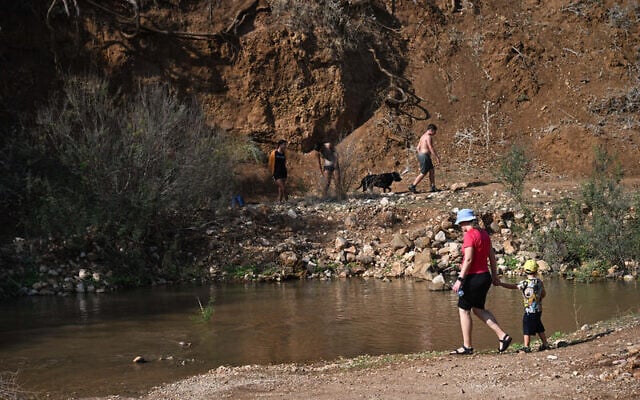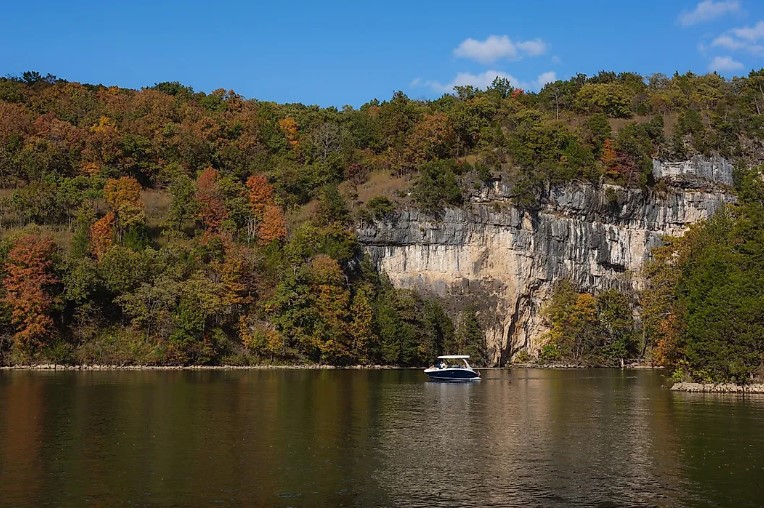EAC official sounds alarm on Lake Victoria declines health – Sudans Post

Report on the Ecological and Human Crisis in the Lake Victoria Basin
Introduction
A report launched at a COP30 side event indicates that the Lake Victoria Basin is confronting a severe ecological and human crisis, threatening the progress towards multiple Sustainable Development Goals (SDGs). The East African Community (EAC) Deputy Secretary General, Andrea Ariik, has called for urgent, coordinated action among partner states to mitigate irreversible damage to this critical regional resource. The new State of the Basin Report (SoBR), developed by the Lake Victoria Basin Commission (LVBC), provides a comprehensive analysis of the environmental pressures, socio-economic impacts, and governance challenges facing the region.
Key Findings of the State of the Basin Report (SoBR)
Environmental Pressures and SDG Implications
The SoBR details significant environmental degradation that directly undermines key SDGs. The primary pressures identified include:
- Water Pollution: Widespread discharge of untreated wastewater, industrial effluents, and agricultural runoff has led to a sharp decline in water quality, directly contravening the objectives of SDG 6 (Clean Water and Sanitation).
- Ecosystem Degradation: The report notes a severe loss of biodiversity, shrinking wetlands, and sedimentation. These factors threaten aquatic and terrestrial ecosystems, impacting SDG 14 (Life Below Water) and SDG 15 (Life on Land).
- Climate Change Impacts: The basin is increasingly vulnerable to climate-induced shocks such as extreme rainfall, rising temperatures, droughts, and floods. This exacerbates existing environmental stress and highlights the urgent need for climate adaptation strategies in line with SDG 13 (Climate Action).
Socio-Economic Consequences
The environmental crisis has profound socio-economic consequences for the more than 45 million people dependent on the basin. The degradation of the lake’s resources poses a direct threat to several SDGs:
- SDG 2 (Zero Hunger) and SDG 1 (No Poverty): Falling fish stocks and impacts on agriculture threaten regional food security and endanger the livelihoods of millions, potentially reversing gains in poverty reduction.
- SDG 3 (Good Health and Well-being): The decline in water quality presents significant public health risks to communities relying on the lake for drinking water.
- SDG 8 (Decent Work and Economic Growth): The crisis jeopardizes key economic sectors including water transport, energy generation, and fisheries, thereby threatening regional stability and economic growth.
Recommendations and Call for Coordinated Action
Proposed Interventions for Sustainable Development
The report outlines a clear pathway for reversing the basin’s decline through targeted interventions aligned with the 2030 Agenda for Sustainable Development. Key recommendations include:
- Major investments in wastewater treatment infrastructure to advance SDG 6.
- Promotion of sustainable agricultural practices and effective erosion control measures to protect ecosystems, supporting SDG 2 and SDG 15.
- A concerted focus on wetland restoration to enhance biodiversity and climate resilience, contributing to SDG 13 and SDG 15.
- Strengthening environmental governance and empowering the LVBC with the necessary authority and resources to harmonize cross-border environmental management.
International Cooperation and Partnerships
The Role of Partnerships in Achieving the Goals (SDG 17)
The development of the SoBR exemplifies the importance of SDG 17 (Partnerships for the Goals). The report was supported by GIZ, with data sourced from the Water Information System (WIS), which was financed by the German Federal Ministry for Economic Cooperation and Development (BMZ) through KfW Development Bank.
Julia Kronberg, representing BMZ, reaffirmed Germany’s commitment to partnering with the EAC to promote data-driven climate action. This collaboration is expected to serve as a foundation for financing green infrastructure, transboundary water management, and climate adaptation projects, thereby accelerating the region’s progress towards a sustainable and resilient future.
Analysis of Sustainable Development Goals in the Article
1. Which SDGs are addressed or connected to the issues highlighted in the article?
- SDG 6: Clean Water and Sanitation – The article’s central theme is the ecological crisis of Lake Victoria, focusing on declining water quality due to pollution from untreated wastewater, industrial effluents, and agricultural runoff.
- SDG 14: Life Below Water – The report highlights a sharp decline in fish stocks and the overall degradation of the lake’s aquatic ecosystem, which directly relates to the conservation and sustainable use of marine and freshwater resources.
- SDG 15: Life on Land – The article mentions shrinking wetlands and loss of biodiversity within the Lake Victoria Basin, which are key concerns of this goal focusing on terrestrial and inland freshwater ecosystems.
- SDG 13: Climate Action – Climate change is identified as a major factor exacerbating the crisis, with mentions of climate-induced shocks like extreme rainfall, rising temperatures, droughts, and floods.
- SDG 2: Zero Hunger – The decline in fish stocks and threats to sustainable farming directly impact the food security of the 45 million people who depend on the basin.
- SDG 8: Decent Work and Economic Growth – The lake is described as the “economic engine of East Africa,” and the degradation of its resources threatens jobs, livelihoods, and regional economic stability.
- SDG 17: Partnerships for the Goals – The article emphasizes the need for coordinated action among East African Community (EAC) partner states and highlights existing collaborations involving the Lake Victoria Basin Commission (LVBC), GIZ, BMZ, and KfW Development Bank.
2. What specific targets under those SDGs can be identified based on the article’s content?
- SDG 6: Clean Water and Sanitation
- Target 6.3: By 2030, improve water quality by reducing pollution… halving the proportion of untreated wastewater. The article directly calls for “major investments in wastewater treatment” to combat pollution from “untreated wastewater and industrial effluents.”
- Target 6.5: By 2030, implement integrated water resources management at all levels, including through transboundary cooperation. The article explicitly mentions the “Lake Victoria Basin Integrated Water Resource Management Program” and calls for EAC partner states to “harmonize cross-border environmental actions.”
- SDG 14: Life Below Water
- Target 14.1: By 2025, prevent and significantly reduce marine pollution of all kinds, in particular from land-based activities. The article details pollution from land-based sources like “agricultural runoff” and “industrial effluents” degrading the lake.
- Target 14.2: By 2020, sustainably manage and protect marine and coastal ecosystems to avoid significant adverse impacts… and take action for their restoration. The article’s core message is the need for urgent action to “prevent irreversible damage” and “restore the basin for future generations” due to “falling fish stocks” and degraded ecosystems.
- SDG 15: Life on Land
- Target 15.1: By 2020, ensure the conservation, restoration and sustainable use of terrestrial and inland freshwater ecosystems and their services, in particular… wetlands. The article specifically identifies “shrinking wetlands” as a key problem and calls for “wetland restoration.”
- SDG 13: Climate Action
- Target 13.1: Strengthen resilience and adaptive capacity to climate-related hazards and natural disasters. The article notes that “climate change—including extreme rainfall, rising temperatures, droughts and floods—is making these vulnerabilities worse” and calls for “climate adaptation projects.”
- SDG 2: Zero Hunger
- Target 2.4: By 2030, ensure sustainable food production systems and implement resilient agricultural practices. The article links the crisis to “food security,” mentions threats from “agricultural runoff,” and calls for a shift to “sustainable farming methods.”
- SDG 17: Partnerships for the Goals
- Target 17.16: Enhance the Global Partnership for Sustainable Development, complemented by multi-stakeholder partnerships. The entire initiative described involves a multi-stakeholder partnership between the EAC, LVBC, GIZ, BMZ, and KfW Development Bank to address the regional challenge.
3. Are there any indicators mentioned or implied in the article that can be used to measure progress towards the identified targets?
- The State of the Basin Report (SoBR): The report itself serves as a comprehensive measurement tool, providing “comprehensive insights into the ecological health, socio-economic trends and governance challenges of the basin.” It is the primary source of data for tracking progress.
- Water Quality Metrics: The mention of a “sharp decline in water quality” implies the use of indicators to measure pollutants from wastewater, industrial effluents, and agricultural runoff. This relates to Indicator 6.3.2 (Proportion of bodies of water with good ambient water quality).
- Fish Stock Levels: The concern over “falling fish stocks” implies that fish populations are being monitored. This directly relates to Indicator 14.4.1 (Proportion of fish stocks within biologically sustainable levels).
- Extent of Wetlands: The problem of “shrinking wetlands” suggests that the area covered by these ecosystems is being measured over time. This relates to Indicator 6.6.1 (Change in the extent of water-related ecosystems over time).
- Biodiversity Levels: The “loss of biodiversity” is a stated problem, implying that metrics like species counts or endangerment levels are being tracked. This can be associated with Indicator 15.5.1 (Red List Index).
- Financial Investment: The article mentions a “total funding volume of 60 million euros” for the Integrated Water Resource Management Program. This serves as a financial indicator for partnerships and commitment to action, related to Indicator 17.3.1 (Foreign direct investment, official development assistance… as a proportion of total domestic budget).
- Water Information System (WIS): The article explicitly states that the SoBR draws “on data from the Water Information System (WIS).” This system is a direct mechanism for collecting and managing data for various indicators related to the basin’s health.
4. Table of SDGs, Targets, and Indicators
| SDGs | Targets | Indicators |
|---|---|---|
| SDG 6: Clean Water and Sanitation | 6.3: Improve water quality by reducing pollution and untreated wastewater. 6.5: Implement integrated water resources management, including transboundary cooperation. |
– Data on water quality from the Water Information System (WIS) (Implied Indicator 6.3.2). – Measurement of wetland area (Implied Indicator 6.6.1). |
| SDG 14: Life Below Water | 14.1: Reduce marine pollution from land-based activities. 14.2: Sustainably manage and protect aquatic ecosystems. |
– Data on “falling fish stocks” (Implied Indicator 14.4.1). |
| SDG 15: Life on Land | 15.1: Ensure the conservation and restoration of inland freshwater ecosystems, especially wetlands. | – Data on “loss of biodiversity” (Implied Indicator 15.5.1). – Measurement of “shrinking wetlands.” |
| SDG 13: Climate Action | 13.1: Strengthen resilience and adaptive capacity to climate-related hazards. | – The State of the Basin Report (SoBR) as a tool for data-driven climate action. |
| SDG 2: Zero Hunger | 2.4: Ensure sustainable food production systems and resilient agricultural practices. | – Data on fish stocks, which impacts food security. |
| SDG 17: Partnerships for the Goals | 17.16: Enhance the Global Partnership for Sustainable Development through multi-stakeholder partnerships. | – Funding volume of 60 million euros for the IWRM program (Related to Indicator 17.3.1). |
Source: sudanspost.com
What is Your Reaction?
 Like
0
Like
0
 Dislike
0
Dislike
0
 Love
0
Love
0
 Funny
0
Funny
0
 Angry
0
Angry
0
 Sad
0
Sad
0
 Wow
0
Wow
0
















































:focal(1500,1000)/https://media.globalcitizen.org/a6/9a/a69a4720-d8a1-4715-b596-18738d03c05c/rotary_polio_hero_image.jpg?#)







/countries/sri-lanka/photo-credit---dmc-sri-lanka.tmb-1200v.jpg?sfvrsn=dc298bcc_1#)

















